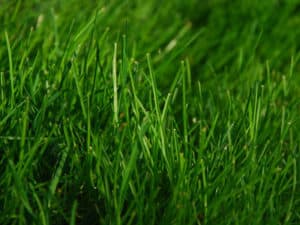Produce quality turf by following these tried and true nutrition practices.
A lush lawn provides numerous benefits, such as controlling soil erosion, absorbing polluting air particles and providing oxygen. Proper fertilization ensures that turf receives the nutrients it needs to better withstand stresses, including foot traffic, pests, diseases and heat. Peter Landschoot, a professor of turfgrass science at Pennsylvania State University, says that “fertilization does more to improve poor quality turfgrass or to maintain good quality turfgrass than any other management practice.”
“The type and amount of fertilizer you use and the timing of your applications will depend on many factors, including grass species and cultivars, soil type, management practices and how the turf is used,” Landschoot explains. “There’s no magic, one-size-fits-all equation to fertilization,” agrees James McAfee, an associate turfgrass professor with the Texas A&M Research and Extension Center. He recommends routine soil testing to determine pH and nutrient availability. “Base your fertilizer program on the strengths and deficiencies apparent in your soil profile.”
Nutrient Knowledge
Turf species differ in the amount of fertilizer, especially nitrogen fertilizer, they require for best performance. “Kentucky bluegrass and perennial ryegrass typically need three to four pounds of nitrogen per 1,000 square feet per year, whereas fine fescues respond best to two to three pounds,” Landschoot recommends. “Warm-season grasses like St. Augustinegrass may require three to four pounds of nitrogen per 1,000 square feet per year in the sun or two to three pounds in the shade,” McAffee says.
When it comes to nitrogen, controlled-release fertilizers (CRFs) are important because “they provide a longer duration of nitrogen release than water-soluble fertilizers (WSFs) and are safer to use on turf because of their lower burn potential,” Landschoot says. Many growers use a combination of CRFs and WSFs for their fertility programs.
Timing Matters
Timing is essential in successful fertilizer applications and will vary based on region and turfgrass species. “For warm-season turfgrasses, such as St. Augustinegrass, bermudagrass and zoysiagrass, apply first applications in spring,” McAfee recommends. “Then, continue through the season according to different turfgrass requirements. End with a final application in mid to late fall. Buffalograss and centipedegrass typically require a later start late spring to early summer. For cool-season turf, such as tall fescue and bluegrass, make heavier applications in fall and early winter, and light applications in late winter and late spring,” McAfee suggests.
It’s All in the Technique
“Careless application techniques or excessive amounts of fertilizer applied at the wrong times can result in turf damage,” says Landschoot. “Calibrate spreaders for each product because products vary in density, size, active ingredients and nutrient content.” Many university researchers recommend calibrating a spreader to deliver half the desired rate of fertilizer and then making two coverage passes, the second pass at right angles to the first, for the most consistent coverage.
To ensure uniform coverage, Landschoot provides some additional tips:
- Begin walking before opening hopper holes and close hopper holes at the end of a pass while still walking, but before turning to begin another pass.
- Add more fertilizer to the hopper instead of bouncing or rocking the spreader to release the final bits of the product in order to complete a pass.
- Never operate spreaders while traveling backward.
- Don’t apply lightweight materials on windy days.
- If granules stick together in clumps, break them apart or don’t use the product.
- Clean a spreader thoroughly after applying granular products to prevent buildup of fertilizer particles and corrosion of spreader parts.
KeyPlex offers a wide range of products for plant nutrition programs. TurfPlex is a combination of secondary macronutrients and micronutrients designed specifically for use on turfgrass. The blend contains alpha-keto acids, which may facilitate utilization of micronutrients, and increase resistance to environmental stressors.

